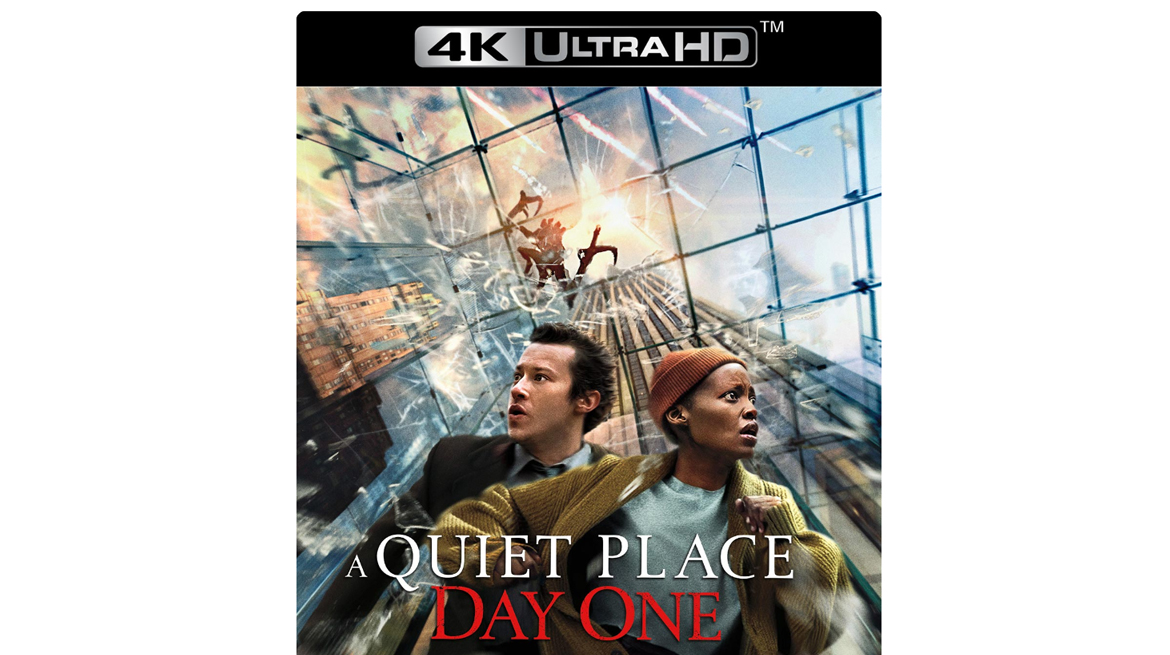TL;DR
Discover the terrifying beginnings of the sound-hunting aliens' invasion in *A Quiet Place - Day One*. Follow Samira, a woman facing her final day, as she navigates a chaotic New York with a new companion. While Lupita Nyong'o shines and the film boasts stunning visuals and Dolby Atmos audio, it treads familiar ground and suffers from creature logic inconsistencies. Does this prequel add enough to the saga to warrant your attention? Dive into the full review to find out!
A Quiet Place – Day One, as the title implies, chronicles the initial day of the sound-sensitive extraterrestrial creatures’ arrival on Earth and their subsequent, brutal extermination of any life form generating noise. Samira (Lupita Nyong’o), a patient in a hospice awaiting her demise from a terminal illness, reluctantly participates in an excursion to New York. Upon arrival, the invasion commences, thrusting Samira and her feline companion into the heart of the pandemonium. With nothing to lose, she defies the fleeing masses, seeking to make her final day meaningful. En route, she encounters Eric (Joseph Quinn), whom she hesitantly allows to accompany her on this extraordinary journey.
A Quiet Place and its sequel, A Quiet Place Part II, were both written and directed by John Krasinski, who also cast his wife, Emily Blunt, in the leading role. The core concept is remarkably straightforward: Earth is besieged by alien entities that, while completely blind, possess exceptionally acute hearing and thus eliminate any audible presence. Both films maintain a compelling tension and are expertly crafted. The second installment was particularly engaging, culminating in a cliffhanger wherein the protagonists discover a method to expedite their survival. Consequently, anticipation for a direct sequel was high; however, a prequel film featuring an entirely new cast was announced instead. The efficacy of this decision remains debatable.
A Quiet Place – Day One is by no means a deficient film. The direction is competent, and the casting choices are commendable, featuring a stellar performance by Lupita Nyong’o (Us) in the principal role. The film incorporates some novel sequences and an endearing feline character portrayed by actual animals, eschewing CGI (unlike Skriet från Vildmarken). The narrative twist of the protagonist’s terminal condition and its influence on her journey is also noteworthy – an intelligent and innovative concept.
However, the film’s primary shortcoming lies in its limited contribution to the established lore, despite its overall quality and execution. It largely reiterates the themes and scenarios presented in the preceding films. Furthermore, the inconsistent depiction of the creatures’ auditory capabilities is a point of concern. Their hearing sensitivity fluctuates drastically, ranging from complete unawareness of nearby, significant noises to detecting faint sounds from considerable distances. This inconsistency suggests that the script dictates their hearing range rather than adhering to a consistent, logical framework.
Another missed opportunity is the failure to fully capitalize on the potential for deeply moving and impactful scenes. While the foundation for such moments exists, the filmmakers refrain from pushing the boundaries to create a truly visceral and emotionally resonant experience.
Conversely, the film’s audio presentation on this UHD edition is exceptional. The Dolby Atmos sound design delivers intense pressure, particularly in the bass and midrange frequencies. The initial attack sequence is characterized by palpable force, while quieter moments exhibit remarkable clarity. The Dolby Atmos track effectively showcases its capacity for creating immersive and expansive soundscapes. The visual presentation in 2160p and HDR is equally impressive, particularly evident during a thunderstorm sequence, highlighting the film’s meticulous image composition. The inclusion of substantial bonus content is also a significant advantage.
In conclusion, A Quiet Place – Day One is recommended for its impressive audiovisual presentation on UHD, but the film itself, while entertaining, lacks significant narrative impact.
SF Studios provided review copies for this assessment. The provision of materials does not influence our editorial independence; our reviews are conducted independently, prioritizing the interests of our readers and consumers.

